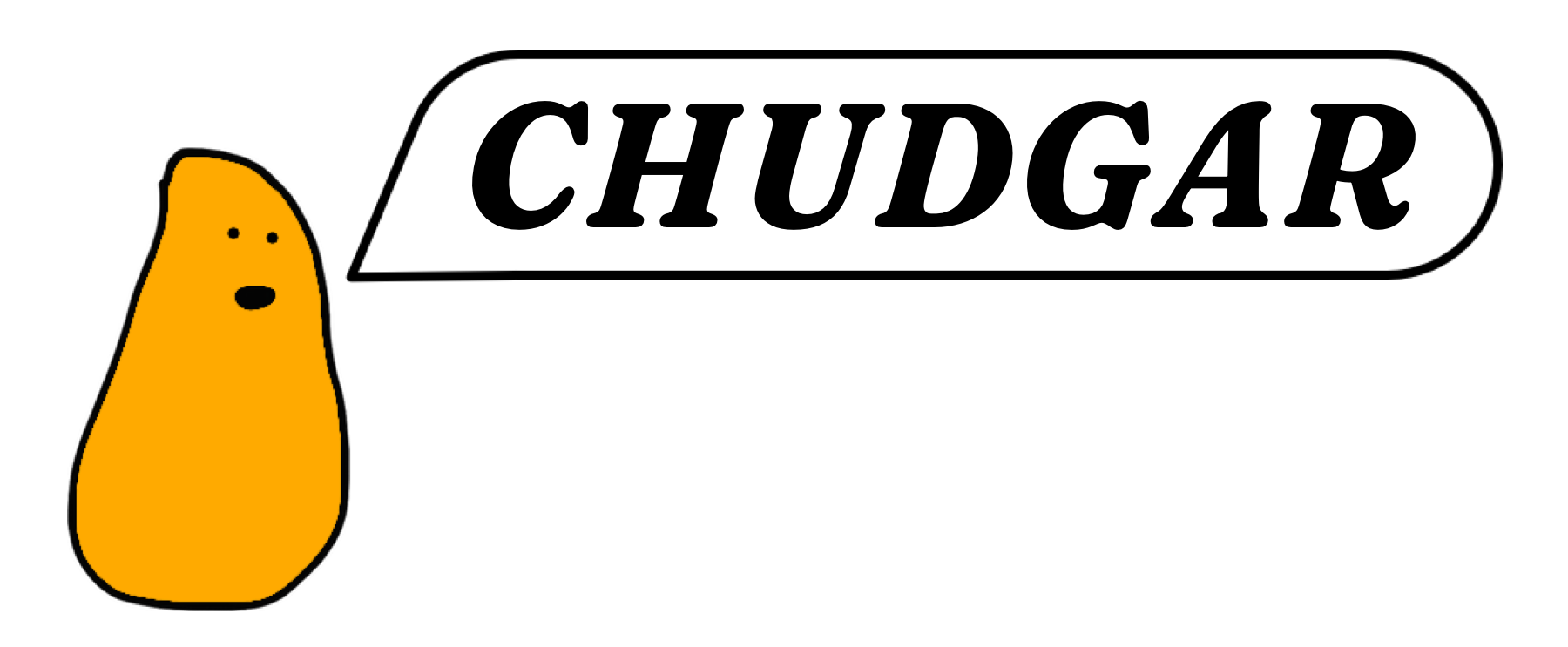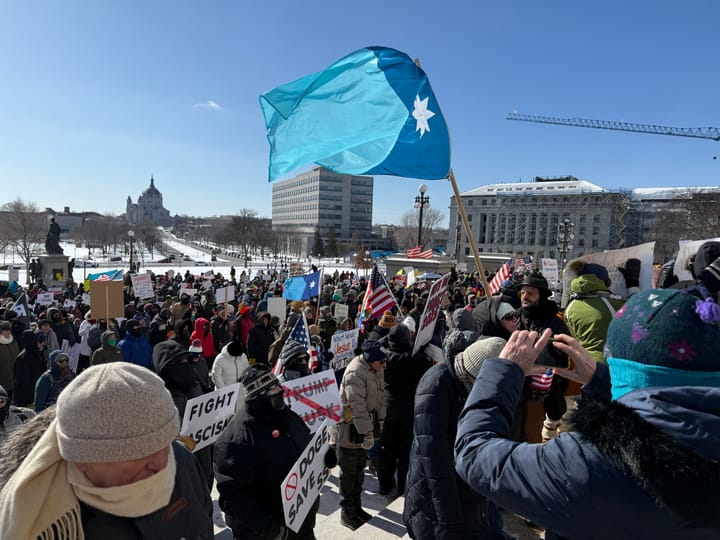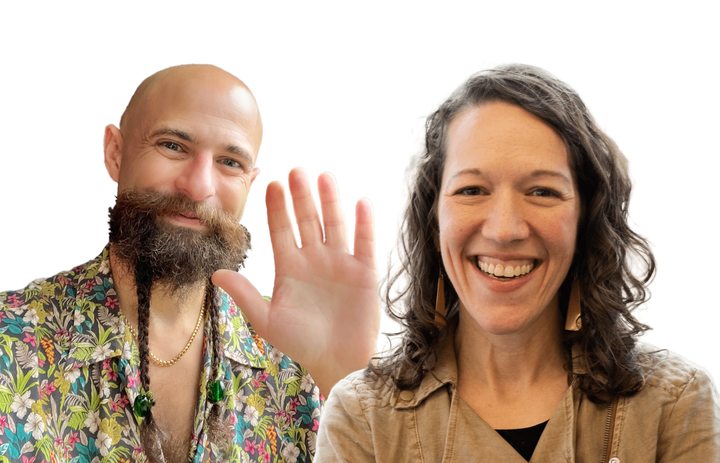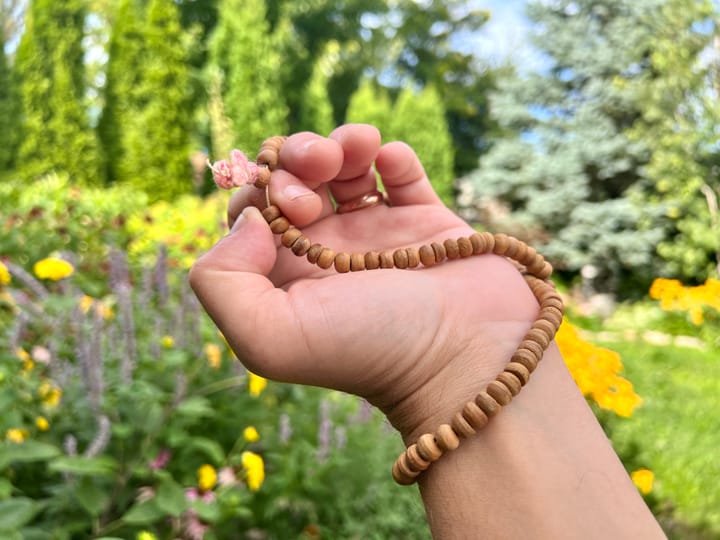Why systems change takes patience
“Systems change is like planting a forest,” says veteran Minnesota policy leader Antonia Apolinario-Wilcoxon. “Someday, children will be able to play in the shelter of the trees. Today, your job is to dig holes and plant seeds.”

If you live in Minnesota, you know someone whose life has been touched by the work of Antonia Apolinario-Wilcoxon. Among our state’s most distinguished policy leaders, she is best known for her persistent and powerful work to make the state’s Department of Human Services more equitable and responsive to the needs of all Minnesota communities. Now an independent consultant, Dr. Apolinario-Wilcoxon is a founding member of the Community Engagement for Equitable Systems Change collaborative. This is the story of her life so far — and a lesson about the challenges and rewards of systems change.
- Systems and communities
- From Brazil to Minnesota
- From Minnetonka to Frogtown
- Turning the ship at DHS
- Bringing community voices into systems
- The need for patience
Why Systems Change Takes Patience (A Brief Autobiography)
Equitable Systems blog, September 21, 2020
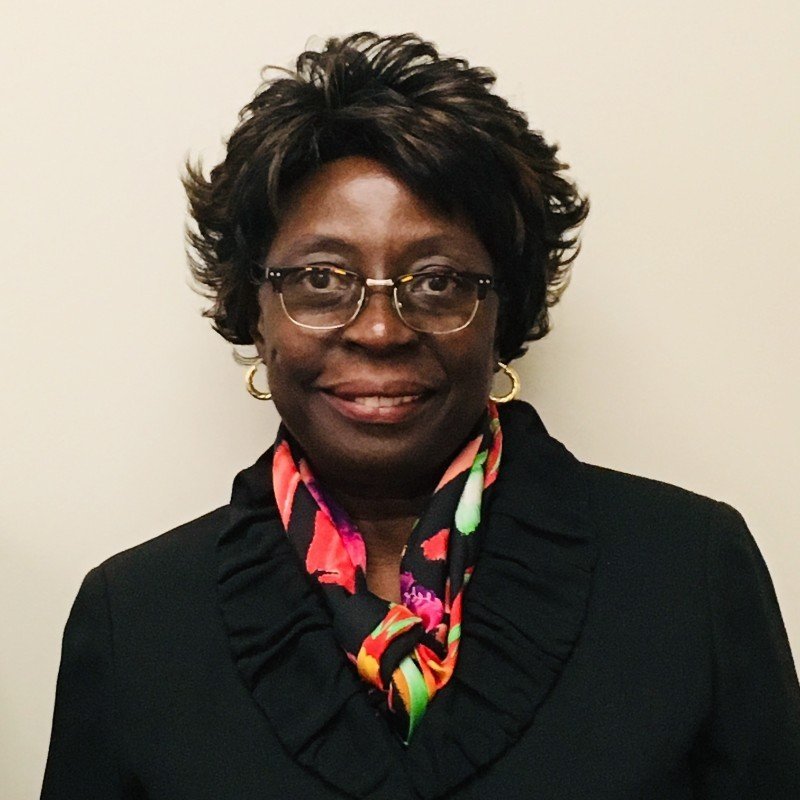
1. Systems and communities
I learned about systems change from the experience of growing up poor in Brazil, in what we would call a slum here. My father died when I was eight and my sister was just 18 months old, along with two brothers in between us. Widowed young, my mother supported our family as a seamstress in the homes of the wealthy. She was exposed to families in another economic and class situation; and because she was a brilliant critical thinker, she helped my sister and me put our experience of poverty in a systems context. Sometimes, after a long day of sewing elaborate wedding trousseaus, she would shake her head and say, “Their reality is different from ours.”
It truly was different. As poor as we were, we had far more love and support. In our community, we were all poor together — and it was a wonderful environment. We shared school uniforms. We shared sugar. We were poor, but we were not destitute. We had a community around us who encouraged us, supported us, and expected the best of us. My mother was a widow, but she had a circle of people who supported our family.
“I learned about the necessity of helping people grieve the loss of old ways of behaving and cheer on their willingness to do new things. ” — Antonia Apolinario-Wilcoxon
But still, our options were limited. From the reality of the wealthy, my mother developed a clear understanding of the limitations of poverty and the ways she could help her children see more of the world. Her goals for us were not based on resentment about what we didn’t have, but on carefully chosen hopes and dreams.
She knew she could not leave us money, so she wanted to leave us with a diploma in our hands — so she sent me to take English classes at a private school of languages. The tuition was expensive, and she had to work very hard to make my education possible — a rarity among the predominantly wealthy students at that private school. But my mother told me: “There’s no reason they can do it and you can’t.”
She was right. Thanks to my education, I was selected to participate in an American Field Service cultural exchange program for high-school students. The next chapter of my life began in Lake Crystal, Minnesota — a different world, but in some ways quite familiar.
2. From Brazil to Minnesota
Lake Crystal is a tiny town in Blue Earth County, surrounded by acres and acres of fields. My host family grew soybeans and corn, and my host father worked at a soy processing plant in Mankato. It was the 1970s, I was a city kid from a slum in Brazil, and I was the only Black person for miles.
As young as I was in this strange new world, I was never frightened. My mother had never feared for me, coming to the United States, and I learned from her never to fear for myself. Our family knew all about racism from our lives in Brazil, and we understood that the United States had its own racism too. On television we saw America in Dr. King; we also saw America in the police dogs and firehoses turned on peaceful Black demonstrators.
Thanks to the kindness of my host family, I saw an America that reminded me of the community I came from, one of mutual love and support. They took me into their arms and loved me; thanks to them, my time in Lake Crystal was a very good experience. I met a lot of people, I learned a lot, I made presentations before local civic groups. I got to spend a week in the Twin Cities and visit Central High. I also met the man who would become my husband.
3. From Minnetonka to Frogtown
After graduating college in Brazil with a degree in economics, I followed my new husband back to Minnesota. My mother had trained me well to see education as the key to prosperity, so I went to the University of St. Thomas for a master’s in international management. Not surprisingly, Cargill hired me to work in international finance. They needed me for my Portuguese skills, since Brazil was a major place of economic activity as multinationals expanded in the early 1990s.
My early education in systems thinking made it very uncomfortable for me to work in the world of international finance. Growing up in Brazil, I had learned that multinationals loved being there: labor was relatively cheap, environmental regulations were lax, and Brazilian politicians saw to it that foreign companies had a lot of incentives to be there. Now I was working for the most profitable division at Cargill — and I knew they were profiting on the backs of Brazilians.
I discovered I was not much of a corporate animal, so in 1995 I went to work at a nonprofit in Frogtown. It was quite a change from a chalet in Minnetonka!
Model Cities was one of the organizations that had been created during the 1960s in response to the urban uprisings of that era — and once I arrived, I knew this work was my calling. We served poor communities, and I knew poverty. We served single mothers, who were raising children with no support — just like my mother.
After five years in the well-funded autonomy of the corporate world, I learned very soon that, in nonprofits, you have to work in collaborative relationships. Even back then, in the 1990s, funding was not plentiful; so we had to combine efforts to make sure that the services we provided did not go away. But that kind of collaboration felt like home to me.
I worked for almost 15 years in Frogtown, in different agencies but with the same vibrant community — very active, very supportive of each other. A lot of us in the nonprofit world were executive directors of color. We really enjoyed that work together, and those relationships have endured.
Working for a Head Start program, I started an initiative to help children with social and emotional challenges. To identify the kids who most needed our help, we brought together a group of community-based, state and education agencies to create a referral program from scratch. We recruited a diverse group of mental-health professionals to work with the children, and the climate in Head Start classrooms improved.
As community and nonprofit leaders, we always found a solution, even when we didn’t have funding. And then, when we found a solution, the funding came to us. The Saint Paul Foundation was so impressed by our work on social and emotional needs that they gave us $100,000 to build out our referral program. We did. Then, a year later, our program officer for the Words Work initiative said, “You seem to have done a lot with $100,000. How would you like $4.5 million?” The Knight Foundation invested in the creation of infrastructure at the agency. We were able to expand the referral system beyond Frogtown all the way through Ramsey County.
From my work in Frogtown, I learned something important: I could see that policy could change systems for good, in ways that truly helped communities. Making good policy is exactly what I wanted to do when I took a job at the Minnesota Department of Human Services — the biggest opportunity and the biggest challenge of my career.
4. Turning the ship at DHS
In 2004, when I went to work there, DHS was the largest agency in Minnesota by far — it still is. The agency serves more than 1 million people directly, from moms delivering babies without health insurance to the elderly who need publicly funded nursing facilities to care for them. It is a large and complex organization with a powerful role in shaping policy. For a believer in systems change like me, it was perfect.
I came to DHS believing that the children with the greatest needs were the ones the state should be paying attention to — such as Child Welfare Systems’ children in particular. So my colleagues and I screened them, we listened to them, and we paid attention to them. I traveled around the state with a child psychologist, training mental-health clinicians, pediatricians, and family doctors to help them work with children in ways that would reduce racial disparities. We helped co-locate mental-health services in pediatric clinics. We helped the University of Minnesota create a new certificate program in infant mental health. We changed Medicaid language to include mental health so the health plans would be reimbursed for it. We built coalitions with other organizations to support the wellbeing of babies and toddlers.
All this was systems change, and it was good.
But I kept seeing children of color in the statistics about poor health outcomes — and, unlike my work in Frogtown, I kept not hearing the voices of poor communities in the conversations we were having about policy. Why didn’t we ask the people who are affected by DHS policies for their opinions? I grew up in a poor neighborhood, and I know very well that people in poor communities have lots of experience, lots of wisdom, and many ideas. All we had to at DHS was ask. So we did.
5. Bringing community voices into systems
First, I went back to the University of St. Thomas for a doctorate in critical pedagogy. Paulo Freire’s work in community-based literacy programs inspired me. He stressed the importance of helping adults talk about their own lived experience, so their voice is at the center. I wanted to learn more about how to convene people to share their own ideas. Then I did a lot of convening! I brought people together all over to ask members of communities what they were thinking about the conditions of their own lives. How do they talk about their own health and wellbeing? How do they experience the systems they are in? Then — and this was crucial — how can we bring back what communities tell us to DHS leadership?
My team and I spent three and a half years convening communities and bringing what we heard back to DHS. We never sanitized the language we heard: when African-American people told us, “DHS doesn’t care about Black people,” that’s what I told DHS. To the credit of the agency, my colleagues and I were heard. In 2013, the Minnesota legislature passed a law to create the Cultural and Ethnic Communities Leadership Council for the Department of Human Services, which serves “to advise the commissioner of human services on advancing health equity and reducing disparities that affect racial and ethnic groups.” For the next six years, I devoted all my work to supporting the Council.
Most people in Minnesota have never heard of the Communities Leadership Council. But it made a meaningful difference in DHS — and DHS policies make a real difference in the lives of millions of Minnesotans.
By the time I left DHS in 2019, there were more than 100 agency programs explicitly dedicated to equity. There was an equity director in every single department.
This was systems change, too.
6. The need for patience
As I was leaving DHS, a colleague asked me if, after all my years at the agency, I had accomplished what I wanted to. It’s a good question.
I left the agency because I felt my work was no longer being supported by leadership, and the work itself had often been exhausting. While I was at DHS, there was no time for reflection. My colleagues and I worked long hours, doing out best with slender resources, but we were highly motivated. If you work in systems change, you know this feeling: It needs to be done, so I have to do it. Working that way is hard.
It is also hard to see things change so slowly — if you can see them change at all.
Because DHS is such a large bureaucracy, it is impossible to see the full scale of systems change clearly. I don’t know that I will live to see the day when it’s clear that DHS has changed for the better. But because of my upbringing and my education, I have never expected to see the fruits of my labor.
The phrase “systems change” is trendy and attractive these days, and that is to the good. But actual systems change is elusive. As I have seen up close all my life, systems are incredibly complicated — and most systems are very closed to change, especially those informed by white supremacy or old stereotypes about the humanity of people of color. Changing them is a tall order.
Beyond that, the work we do to change American systems is constrained by the system of American culture itself. Our society is very results-oriented, very interested in speed and personal achievement, and very individualistic. But I simply don’t believe systems change produces visible achievements from individual efforts. Most systems change is invisible to the people who work to achieve it. So we must learn to be satisfied by building the conditions that make greater equity possible.
At DHS, which is so vast and so hard to change, I learned to trust my intuition to recognize signs of progress. How is this department interacting with the commissioner it serves? How is this manager behaving toward her staff? How does this assistant commissioner talk about equity? Those tiny signs of change kept me going when the work felt impossible.
The most promising signs of change, however tiny, are always in people. Although systems change is impossible to see at the level of individual contributions, it’s people who make systems change possible as they learn to embrace new ideas. Over the years, I learned to prepare people, one by one, to welcome the new. I learned that I would need to do a lot of cajoling and prodding, and to smile even when I felt like smacking someone. I learned about the necessity of helping people grieve the loss of old ways of behaving and cheer on their willingness to do new things.
Systems change is like planting a forest. Someday, children will be able to play in the shelter of the trees. Today, your job is to dig holes and plant seeds. Tomorrow, and every day after that, your job is to tend the carefully — knowing full well you will not live to see the new environment your work makes possible. But now and then, you will see signs of life and hope. Those signs will keep you going.
